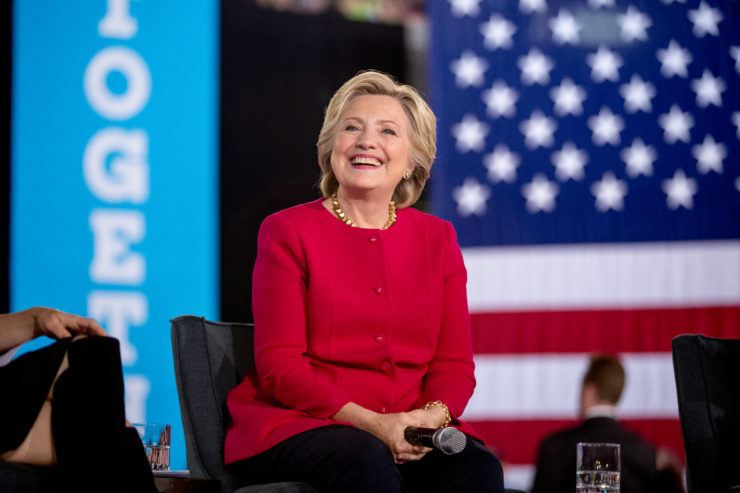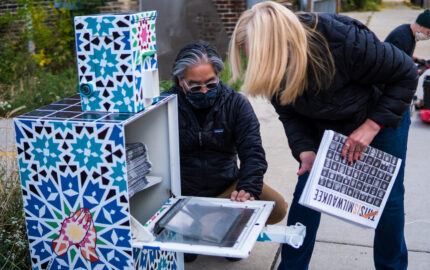When the Enid News & Eagle’s editorial board endorsed Republican Marco Rubio instead of Donald Trump last March, we received virtually no reaction. More editorials criticizing Trump’s remarks on NATO, Muslims, women and libel laws resulted in only a handful of reader comments.
Living in Oklahoma—arguably the reddest state in the union—we still wondered how much people cared about our editorial endorsements. In a story for National Public Radio, Meg Anderson reported that unexpected newspaper endorsements are most significant. The article cited a 2011 study by Chun-Fang Chiang and Brian Knight showing “endorsements for the Democratic candidate from left-leaning newspapers are less influential than are endorsements from neutral or right-leaning newspapers.”
We expected some backlash because we traditionally have endorsed GOP presidential candidates, but we were surprised by the extent of the blowback. Our presidential endorsement of Hillary Clinton published online on October 8, 2016, generated tons of reader engagement, including more letters to the editor than I’ve ever experienced.
We received lots of phone calls from angry readers. We lost some 162 subscriptions, 11 advertisers and even drew the ire of conservative community leaders taking issue with the endorsement. Only a few people publicly defended our point of view. Privately, several community leaders commended us and admitted they didn’t plan to vote for Trump.
The editorial made the rounds on Daily Kos and Reddit and garnered ten times the online audience of October’s most popular website story. Positive emails and phone calls were received from the Mariana Islands, the West Coast and East Coast. The New York Times was so startled by the local fallout that it wrote a widely read story about a small paper in a small red city in a red state going against the grain.
We’re not sure minds were changed by the editorial or the aftermath. In this polarized election, too many voters didn’t want the facts to get in the way of their ideology.
What we didn’t expect was having to explain why we do endorsements in the first place. Many local readers were offended by our “biased" endorsement. Some readers thought we were out of bounds because our opinion didn’t reinforce their personal viewpoint. Angry readers told us journalists should stick to reporting facts and not expressing editorial opinion even though we’ve routinely published an editorial page daily.
In a perfect world, literate internet readers scour multiple news sources to understand the nuances of varying points of view. But we live in reality.
On the bright side, we have more information than ever, but that doesn’t mean the public can always discern good information from bad information, regardless of political stripe. We’ve lost common ground to serve as a rational frame of reference.
Gone are the days when everyone watched the same evening news program. On the TV and cable news networks, airtime is dominated by partisan pundits spinning a right or left narrative. On social media, many readers find their particular worldview validated with Facebook sharing stories catering to their political preference.
Facing criticism for not reining in false news reports during the presidential campaign, Facebook announced it was seeking a “head of news partnerships” position to “clearly communicate and foster transparent dialogue with news organizations globally.”
As editor of a community newspaper, I often speak to civic groups about the difference between opinion and fact-based journalism.
On the news side, we stress verifying and documenting information. An independent, enterprising press digs deeply into public issues affecting local lives. We strive for truth and accountability through attribution, fact checking and transparency.
And then there’s opinion. Newspapers have published editorial endorsements since Abraham Lincoln in 1860. When The New York Times began publishing its version of an op-ed page on Sept. 21, 1970, editors announced the goal of “stimulating new thought and providing new discussion on public problems.”
Opinion pieces should be clearly marked as such. The purpose: provide a civil discussion of ideas free from ad hominem attacks, even if we don’t always achieve that objective. John B. Oakes, editorial page editor of the New York Times from 1961 to 1976, argued the deepest responsibility of a publication is to inspire thinking. In other words, “to question, to debunk.”
Our purpose of stimulating civic discourse is more vital than ever and should go hand-in-hand with civic responsibility. The opinion page shouldn’t be an echo chamber, and we don’t agree with everything we publish.
“Diversity of opinion is the lifeblood of democracy,” Oakes said in 1954. “The minute we begin to insist that every one think the same way we think, our democratic way of life is in danger.”
After church on the Sunday we published the Clinton endorsement editorial in print, a local resident threatened to “beat the hell” out of Senior Writer Jeff Mullin in line at the Western Sizzlin Steak House. Mullin, a mild-mannered columnist and editorial board member, told the objector to write a letter to the editor instead.
New York Times reporter Manny Fernandez’s Dec. 27 story on the News & Eagle’s financial hit and an update on January 3 generated helpful response. We gained 350 new subscriptions and we’re still receiving correspondence from across the globe.
As journalists, we’ll continue reporting well-documented, verified information for our readers in the news sections. And, thanks to the First Amendment, we’ll still publish wide-ranging opinions on the editorial page, including letters to the editor that disagree with the paper’s viewpoint. That’s a responsibility we take very seriously.



